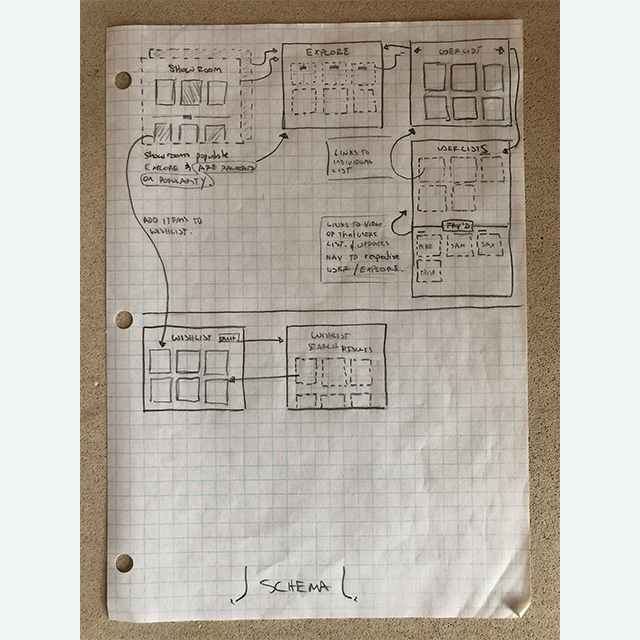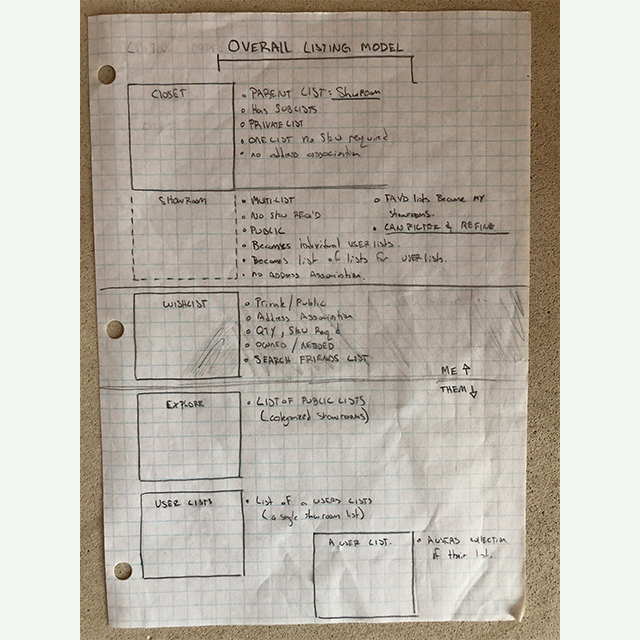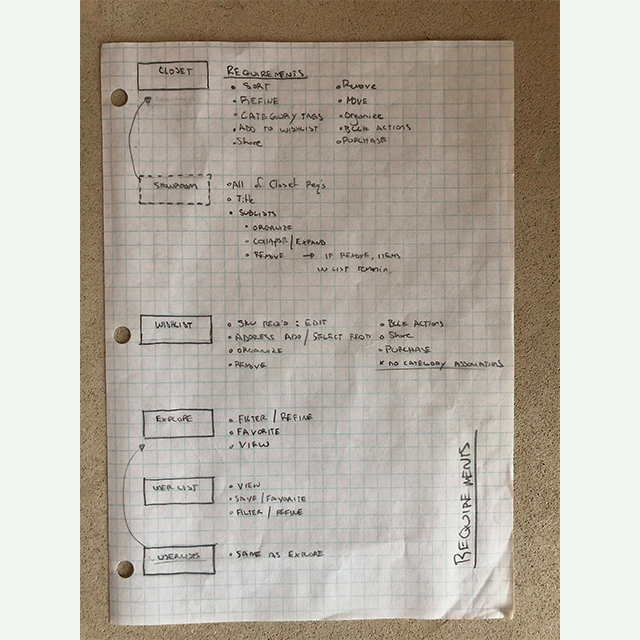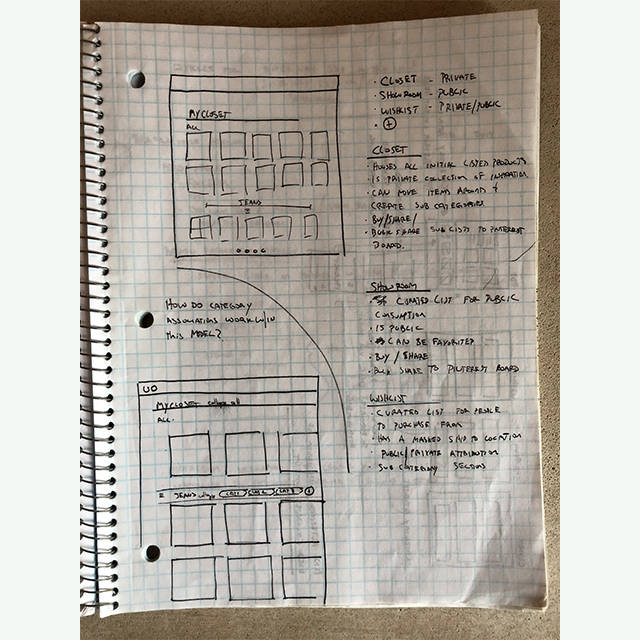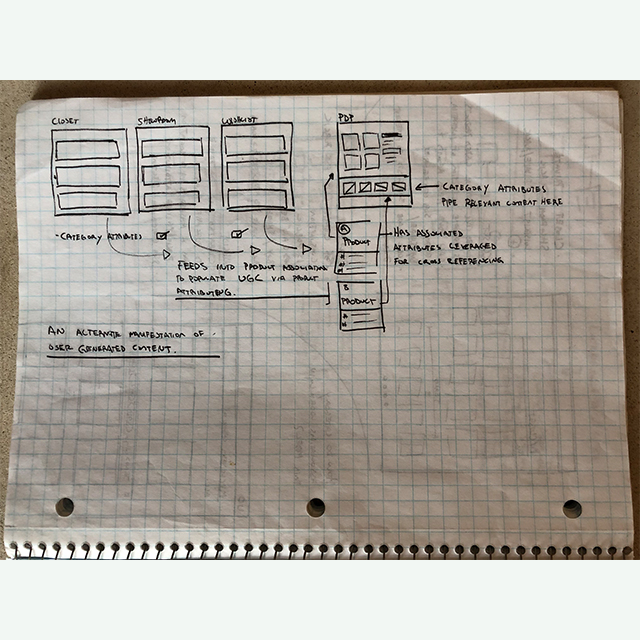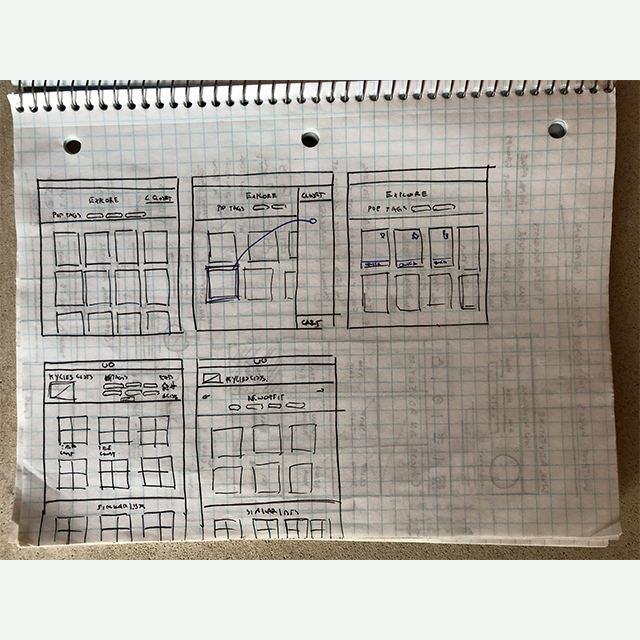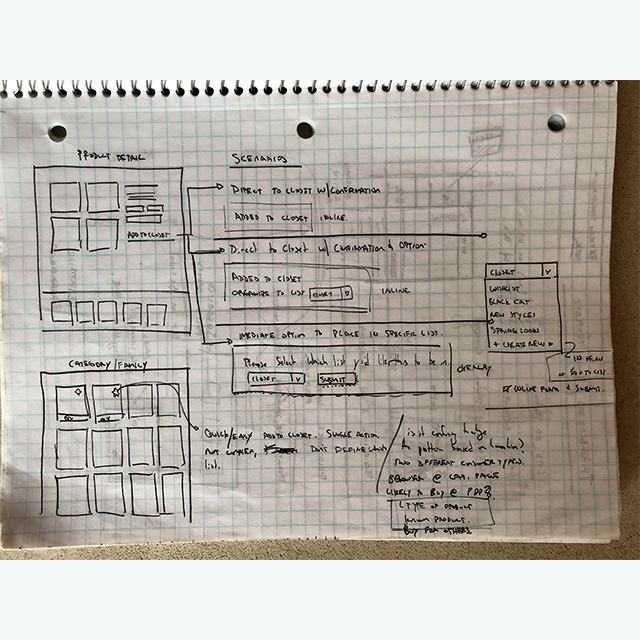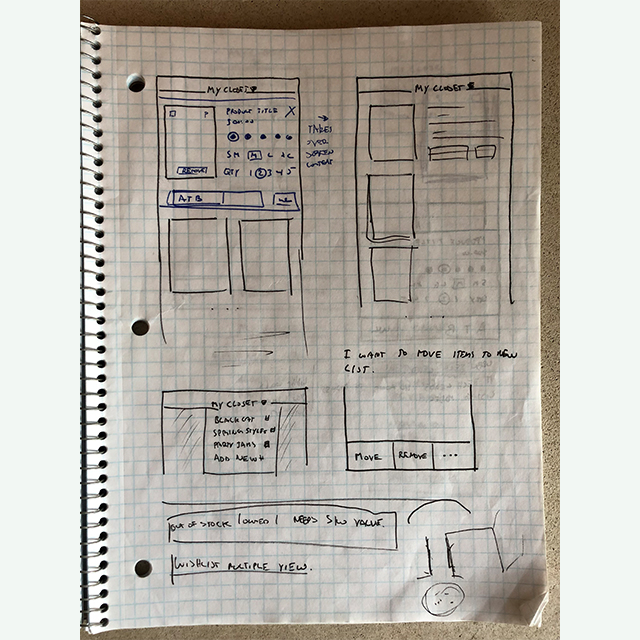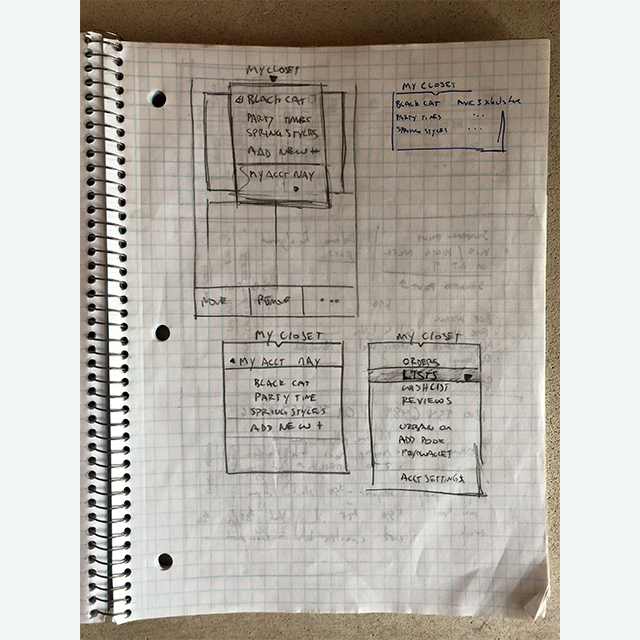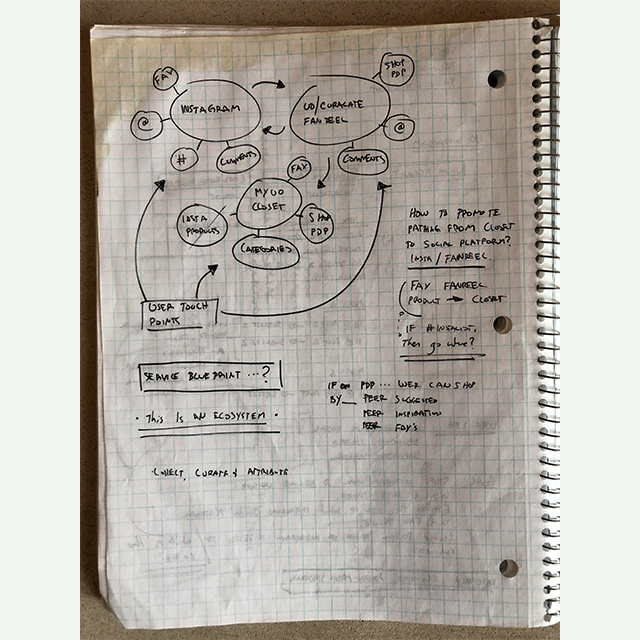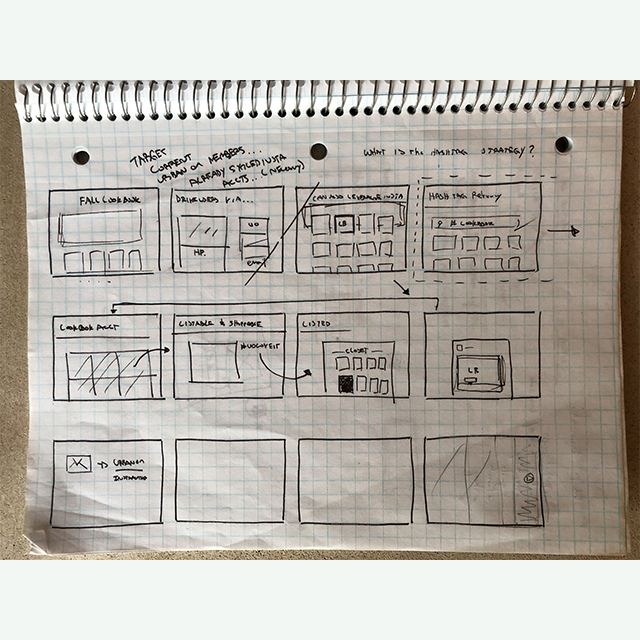e-Commerce listing

User Story
As a shopper interested saving items for inspiration or purchase, I want the system to complement my shopping behavior.
As URBN, we want to streamline the shoppers journey for saving items to a list.
responsive wireframes
-L-600.jpg)
-S-600.jpg)
-S-600.jpg)
-L-600.jpg)
-L-600.jpg)
-S-600.jpg)
-S-600.jpg)
-L-600.jpg)
business problem
URBN needs to plan for a listing ecosystem that better integrates Wish Lists and Hearting as complementary features rather than separate and standalone products.
Free People is being migrated onto the URBN Web white label platform; At the time, white label lacked the concept and functionality of hearting.
Team Structure
| My Roles | Supporting Roles |
|---|---|
| Lead UX Designer | Research Manager: Lizz Cuzzacrea |
| Analyst | |
| Strategist |
research
user perspectives
The following research was conducted by Lizz Cuzzacrea - Lizz and I worked closely to define the goals and hypothesis of a multitide of studies to inform and guide the product architecture and design decisions that we then presented to Anthropologie, Free People, Urban Outfitters and URBN senior and executive leaders. The following data is an excerpt from one survey we conducted that helped in the presentation of a strategic listing product.
Survey Demographics

Key Takeaways
- Multiple list types create confusion around expectations
- Users desire listing flexibility
- Users prefer a single list location
- Lists are leveraged for deal notifications
- Lists are used to aggregate products for sharing and finding later
Industry Data
- 66% of participants report browsing vs 17% purchasing
- Classic sales funnel: Browsing > Narrowing > Purchasing
- Translated "Listing" funnel: SKU-less hearting > SKU-full listing > Carting
- In narrowing phase: 7% of participants are looking for sales / deals
product analysis
Current State
Urban Outfitters list featureset is the least complex – low complexity – with the single list type wish list. Wish lists are accessible behind an authentication gate and products require Color, Size, QTY to be saved (SKU-full).
Anthropologie has multiple list locations, both with a varied set of functional reqiurements - medium complexity - these list types are a wish list and registry. Both of these list types are accessible behind an authentication gate and have SKU-full product requirements.
Free People, however, has multiple methods of collection on their webstore, two of which are product focused, the other focuses on user generated content (UGC); wish listing, product favoriting, and UGC favoriting respectfully - high complexity - all accessible behind the authentication gate where wish lists require SKU and favoriting does not; otherwise known as SKU-less.
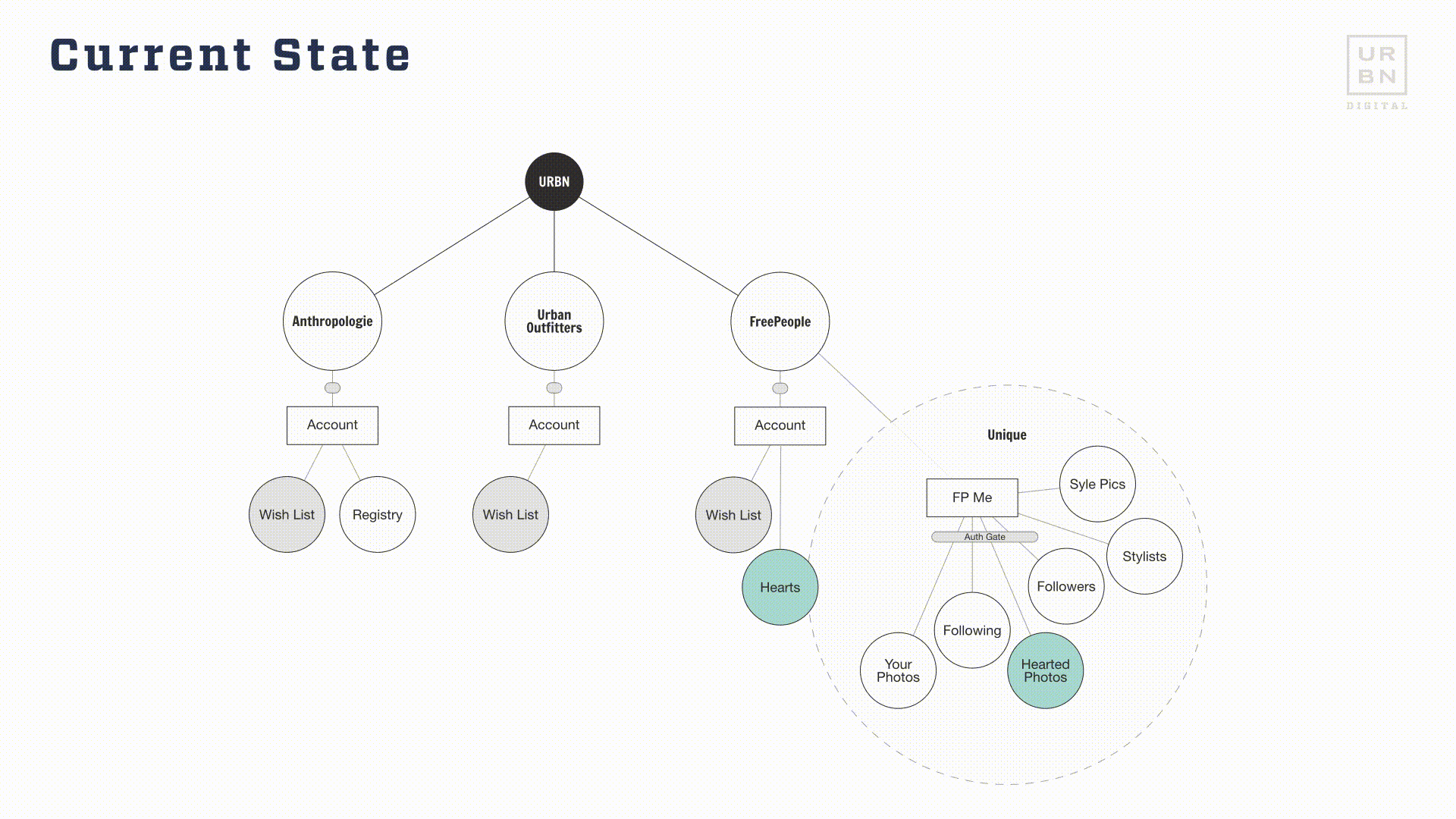
Audit
| Wish List | Registry | Favorites | |
|---|---|---|---|
| Authentication | ⤫ | ⤫ | ⤫ |
| SKU-full saving | ⤫ | ⤫ | |
| SKU-less saving | ⤫ | ||
| Sort | ⤫ | ||
| Multiple lists | ⤫ | ⤫ | |
| QTY desired | ⤫ | ⤫ | |
| Quick shop | ⤫ | ⤫ | |
| Follow | ⤫ | ||
| Image upload | ⤫ | ||
| Explore | ⤫ |
solution overview
Research confimed my hypothesis that a single list location with flexible collection methods is the preferred pattern of interaction and site architecture.
With that, my proposed solution was to consolidate the main listing patterns into a single listing application where users can save a product or SKU ID into their list and from there continue on their various paths of organization and collection irregardless of their end goals.
list types & the shopping journey

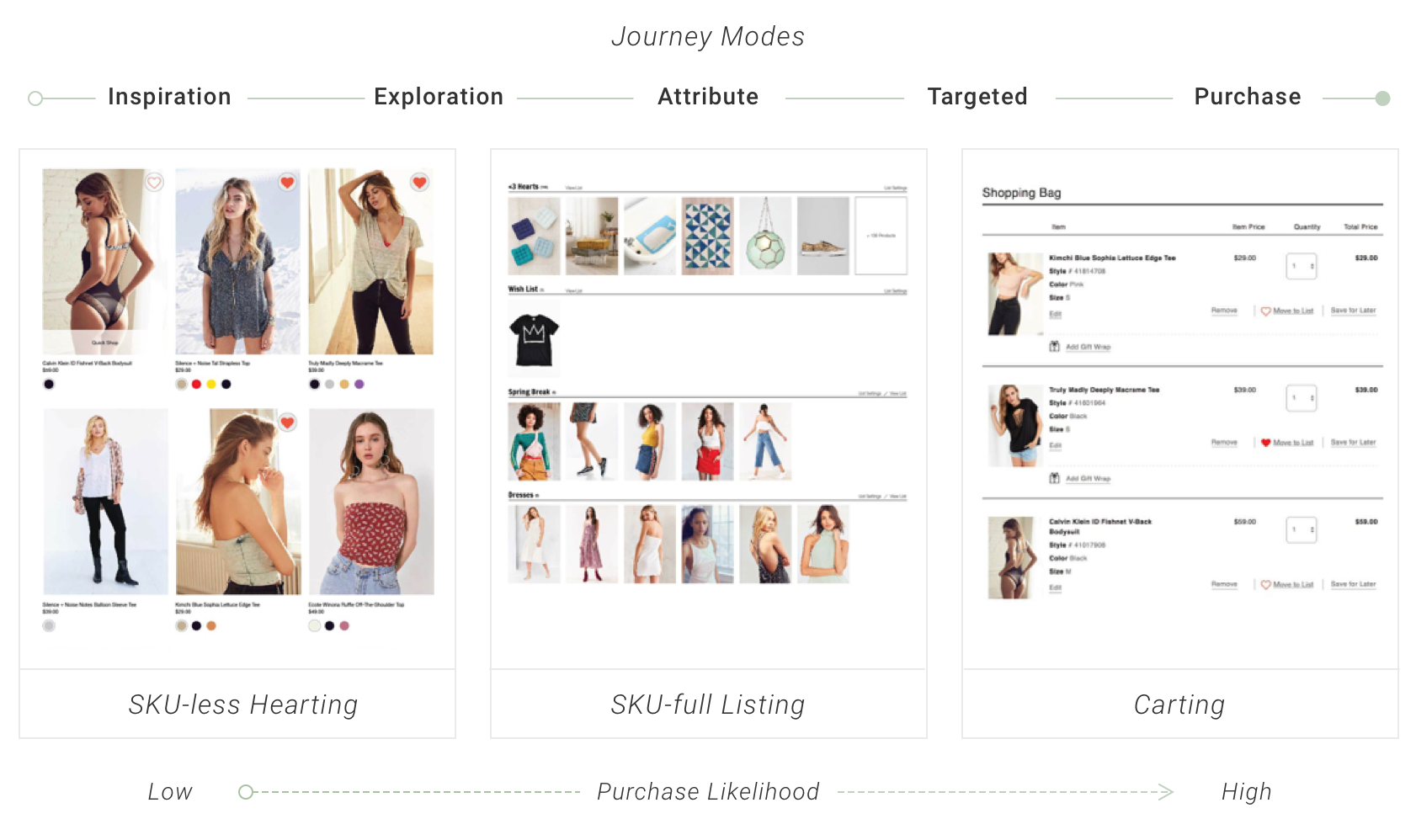
technical proposal – consumer & business value
By unifying the product collection methods and housing saved items in a single list location — the feature-set will complement both primary user types; the hearts user and the wish list user.
Consumer Types

site architecture
information architecture
Diagram
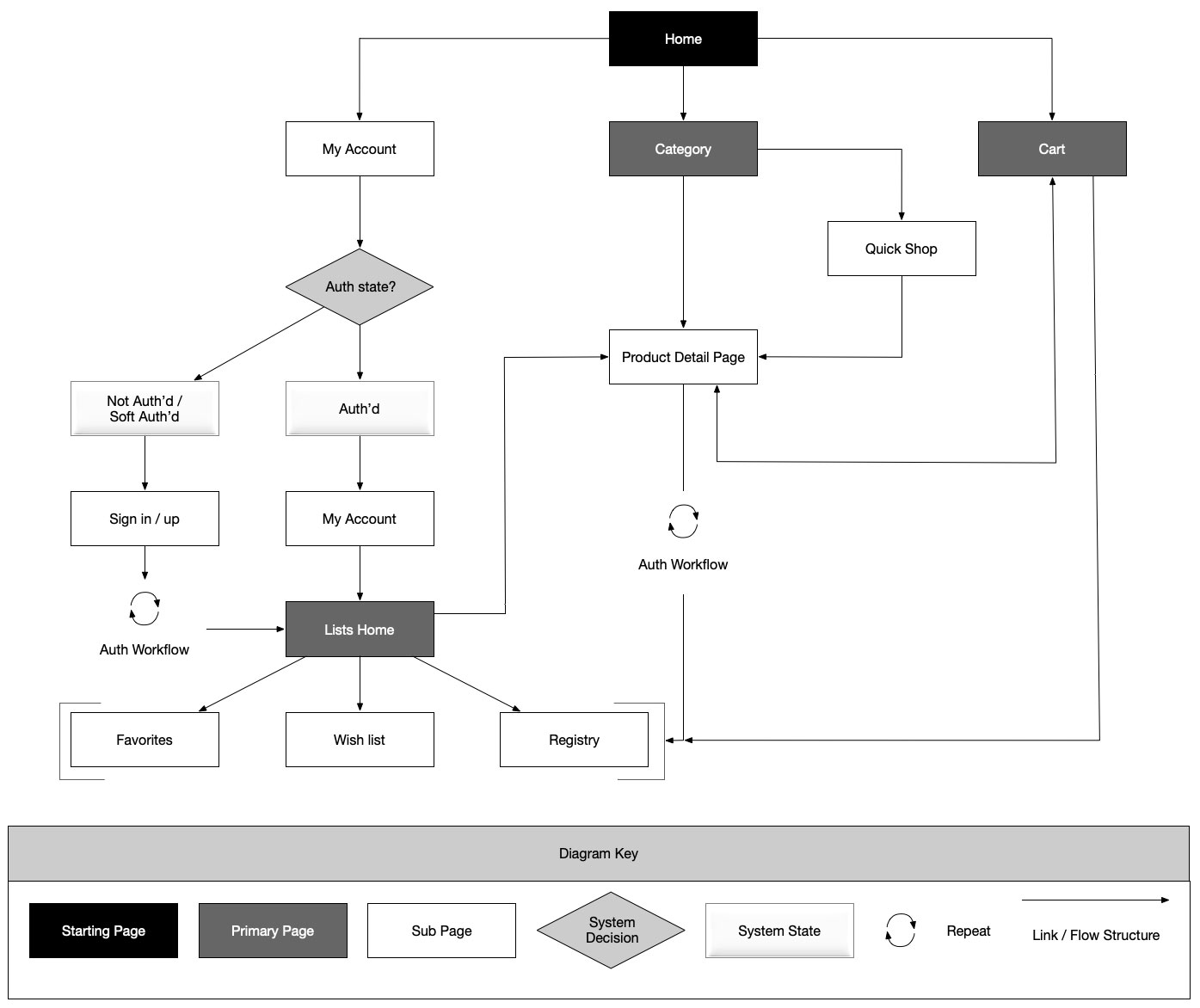
This is a simple diagram exposing the hierarchy of content, authentication gates, and linking states that are expected by a customer and required by the system.
Diagram
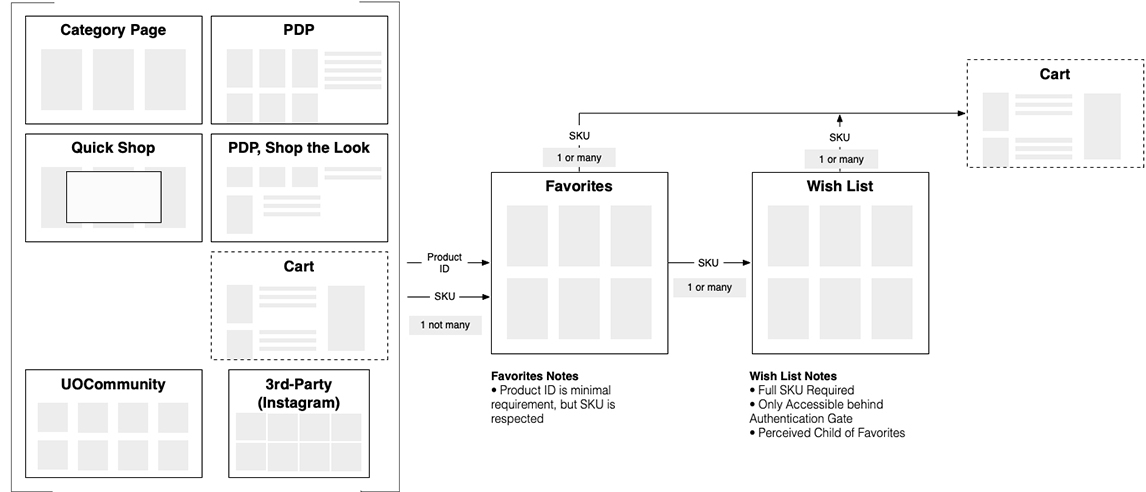
listing specific workflows
User Stories
Scenario A: As a user browsing the site, I want to easily collect products so that I can later review and purchase these items that inspire me.
Scenario B: As a user browsing the webstore who has selected Color, Size, QTY for a given item, when I favorite this item, I want that attribution to persist to the list of my choice.
Diagram
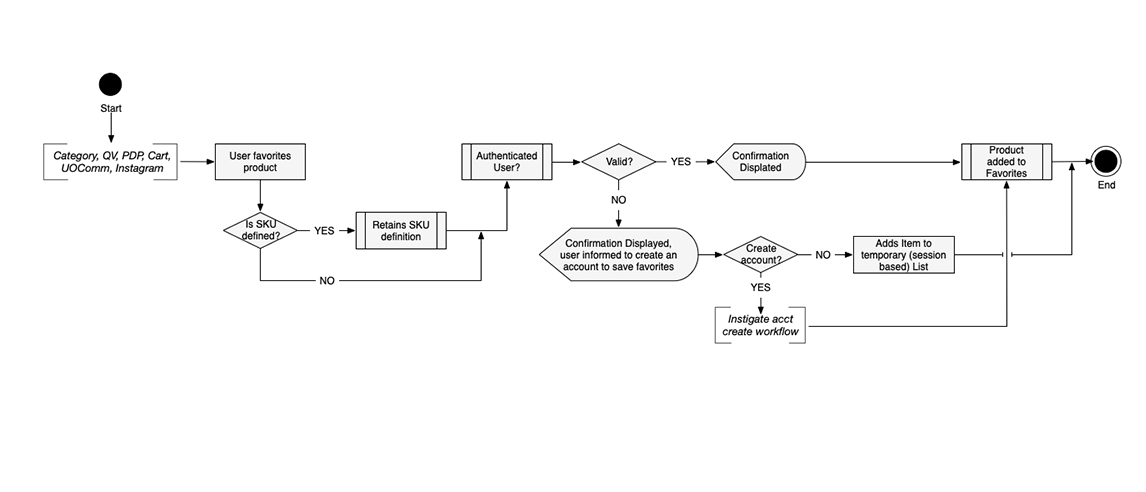
User Stories
Scenario C: I want to manage my lists from a central location
Scenario C1: I want to perform bulk and isolated actions so that I can sort, move, or remove products in my respectful list.
Diagram

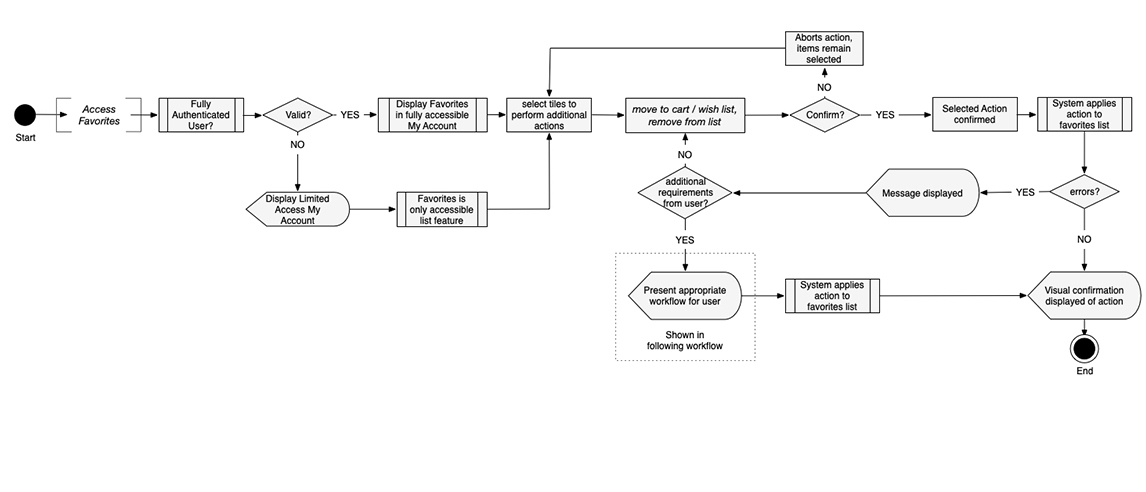
various states of sketching
